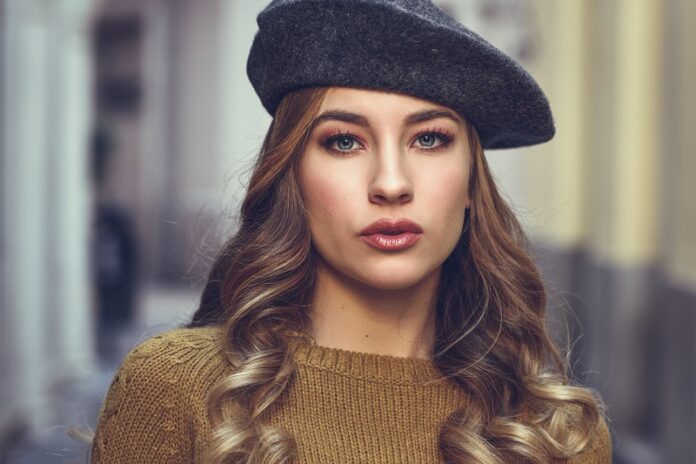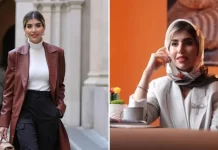
Elizabeth Taylor’s violet eyes were one of her most captivating and iconic features. Throughout her career as an actress, they enchanted audiences and critics alike. But how did she come to have such an unusual eye color, and what fueled the enduring obsession and speculation surrounding Taylor’s luminous violet gaze?
Introduction
Throughout her decades-long career, Elizabeth Taylor starred in over 50 films and won numerous accolades, including two Academy Awards for Best Actress. However, what captivated audiences just as much as her acting talent was her singular beauty, especially her eyes. With a rare eye color that seemed to shift from violet to blue to gray depending on the lighting, Taylor’s eyes were central to her public image and added to the allure surrounding her.
This article will provide an in-depth look at the genetic factors that determine eye color and how Taylor’s particular eye shade was so unique. We’ll explore historical accounts of her eye color from those who knew her and photographic evidence that demonstrates the range of hues her eyes could display. The cultural associations with eye color will also be analyzed to understand why Taylor’s eyes left such a lasting impression. By the end, it will be clear why Elizabeth Taylor’s eye color remains an intriguing aspect of her celebrity status that contributes to her enduring legacy.
A Brief Background on Elizabeth Taylor
Before analyzing the genetics and intrigue behind her eyes, it is useful to understand the background of Elizabeth Taylor herself. Born in 1932 in London to American parents, she rose to stardom as a child actress in films like National Velvet (1944). Her early success continued into adulthood with critically acclaimed performances in movies such as A Place in the Sun (1951), Cat on a Hot Tin Roof (1958), and Who’s Afraid of Virginia Woolf? (1966).
Taylor became just as famous for her glamorous, jet-setting lifestyle and tumultuous romantic relationships as she did for her acting abilities. She married a total of eight times, most notably to Richard Burton, with whom she co-starred in several films. Throughout all the ups and downs of her public and private lives, however, Taylor’s extraordinary eyes remained one of her most enduring trademarks.
The Genetic Basis of Eye Color
The color of human eyes comes down to genetics, specifically the amount of melanin present in the iris. Melanin is a pigment that also determines hair and skin color. The more melanin present in the iris, the darker the eye color. Eye color is inherited through DNA passed down from parents.
Three main genes influence eye color: HERC2, OCA2, and SLC24A4. Different variations in these genes produce higher or lower levels of melanin. The most common eye colors are brown, blue, hazel, and green. Gray eyes are a lighter blue/gray caused by low melanin. Amber, red, and violet are among the rarest eye colors. Since multiple genes impact eye color, variations and combinations of shades are possible. Lighting conditions can also affect how the eye color is perceived.
While genetics establishes the baseline eye color, other factors like age and health can subtly alter the hue over a person’s lifespan. Newborns often have blue or gray eyes at first before melanin content increases. Eye color typically stabilizes between 3-6 years of age. The distribution of melanin in the iris can also change with age, resulting in more variation in color.
So What Exactly Was the Color of Elizabeth Taylor’s Eyes?
By all accounts, Elizabeth Taylor did indeed possess rare violet-colored eyes. In reality, her eye color seemed to shift between bluish-violet to violet-gray depending on factors like lighting and makeup. But their overall hue was distinct from ordinary blue or green eyes.
Here are some descriptions of Taylor’s eye color over the years:
- “Her eyes are violet and not blue and not gray.” – 1956 profile in Life magazine
- “Elizabeth’s eyes were a deep violet bordering on navy blue.” – Biographer Ellis Amburn
- “She had huge, luminous, forget-me-not-violet eyes.” – Biographer Kitty Kelley
- “Elizabeth’s eyes were a striking blue-violet.” – Los Angeles Times obituary
Analyses of color photographs show Taylor’s eyes were a muted yet vivid violet, quite unlike typical blue irises. The saturation and depth of color were certainly uncommon.
So while the exact classification is debated, Taylor seemed to genuinely exhibit an unusually vibrant violet eye color.
What Factors Allowed for Taylor’s Violet Eyes?
What enabled Taylor to display such rare violet-colored eyes? For one, genetics played a key role. Taylor’s mother also had blue-violet eyes, indicating an inherited genetic basis.
But other factors also likely enhanced Taylor’s eye color:
- Thick black eyelashes and eyebrows – The contrast provided by Taylor’s dark lashes and brows made her lighter eyes stand out more.
- Fair skin – Taylor’s porcelain complexion also provided contrast against her eyes.
- Makeup – Taylor’s signature winged eyeliner and blue eye shadow brought out the violet hues in her irises.
- Lighting – Different lighting conditions could make Taylor’s eyes appear more blue or more violet. Warm light tended to accentuate the violet tones.
So while genetics formed the foundation, other physiological and environmental variables refined the exact nuance of Taylor’s eye color.
The Cultural Symbolism of Eye Color
Before analyzing how Taylor’s violet eyes impacted her celebrity, it is worthwhile to examine the broader cultural symbolism ascribed to eye color.
Certain eye colors have developed culturally-specific connotations:
- Blue – intelligence, sensitivity, peacefulness
- Green – jealousy, vivacity, prosperity
- Brown – earthiness, ruggedness, simplicity
- Hazel – uniqueness, confidence, mystery
- Violet – royalty, spirituality, wisdom
These generalized associations shape how people perceive eye colors on an unconscious level. Violet eyes, in particular, are linked with noble virtues.
So while eye color does not inherently determine personality, the cultural meanings attached to eye color can subtly shape social perceptions. Taylor’s violet gaze-evoked implicit connotations of elegance and mystique.
The Allure of Taylor’s Eyes in the Public Eye
Taylor’s uncommon violet-blue eye color strongly contributed to her public image and growing fame. From her early career onward, the stunning quality of her eyes was a central fixation in commentary about her looks.
In a 1949 profile, Life described 12-year-old Taylor as having “great violet eyes, fringed with thick black lashes.” She became swiftly known as “the girl with the violet eyes.”
As Taylor transitioned to more adult roles, her eyes conveyed a sultry, magnetic allure. She skillfully employed makeup to accentuate her limitless irises, imbuing her gaze with a tantalizing quality. The fiery passion in her violet eyes perfectly complemented her screen persona.
Off-screen, Taylor’s eyes continued enthralling the public imagination. She was distinguished as having the most beautiful eyes in the world, with reporters frequently rhapsodizing about their extraordinary impact:
- “Her violet eyes…are the most incredible I have ever seen.” – 1947 Los Angeles Times article
- “She seems to set off sparks with those famous violet eyes.” – 1983 article in People magazine
So while the full force of her acting talent and personal life contributed to her celebrity, those alluring violet eyes were central to her public fascination.
Speculation and Scrutiny of Taylor’s Eye Color
Given the degree of fixation on Taylor’s eyes, there was – and still is – extensive public speculation about whether her violet color was real or due to artificial enhancement.
Some have theorized that Taylor wore tinted contact lenses to produce the violet hue. However, color contacts were not commercially available until decades after Taylor’s rise to fame.
Others suspect she used eye drops to deliberately dilate her pupils and make her irises appear darker. Extensive accounts reference Taylor’s violet eyes stretching back to her childhood.
While lighting and makeup undoubtedly amplified her eye color at times, there are no definitive accounts of Taylor artificially fabricating or altering that signature violet gaze. She was simply gifted with rare natural beauty.
The Impact of Taylor’s Eyes on Beauty Standards
In many ways, Elizabeth Taylor’s violet eyes left a lasting impact on mainstream beauty standards. Along with her striking dark hair contrasted against pale skin, she epitomized classic Hollywood glamour.
Millions of women began striving to recreate Taylor’s luminous eyes, spiking sales of violet and blue-themed cosmetics. Even women naturally blessed with Taylor’s eye color started emphasizing it more in their makeup routines.
Her iconic violet gaze came to represent ideal femininity. Taylor exemplified that eyes could be seductive and vulnerable, strong and soft all at once. Her particular combination of features created an era-defining look that women still aspire to.
The Legacy of Elizabeth Taylor’s Captivating Eyes
While Elizabeth Taylor’s extraordinary acting and eventful personal life certainly account for much of her enduring legend, her violet eyes were equally central to her image. Those mutable violet irises – whether blue, gray, or purple-toned – completed the allure that made her a Hollywood epitome of glamour.
Her eyes conveyed deeper shades of meaning that enriched her on-screen personae with nuanced emotions. Off-screen, they entranced photographers, reporters, and fans alike – sometimes seeming to glimmer in anticipation of her next great adventure.
Though their exact genetic and optical basis eludes definition, the beauty of those violet eyes eternally dazzled the world. Elizabeth Taylor’s eyes were truly windows to a profound spirit that transcended their aesthetic magnificence.
In Summary
Elizabeth Taylor’s rare violet eyes captivated the world. Their exact color seemed to shift, but their beauty was undeniable. A combination of genes, cosmetic enhancement, and lighting conditions produced their prismatic effect. While their genetics remain partly ambiguous, their cultural impact is clear. Those violet eyes defined Taylor’s glamour and endowed her gaze with spiritual depths. She not only used her eyes to mesmerize, but to communicate emotions transcending ordinary vision.
Also Read: THE CAPTIVATING BEAUTY MOGUL REDEFINING INFLUENCE
Conclusion
In the end, the reasons for our enduring fascination with Elizabeth Taylor’s hypnotizing eyes reflect our cultural obsession with physical perfection, celebrity glamour, and the symbols we associate with qualities like beauty and status. Though genetics determined her eye color, their role in her celebrity image demonstrates the power popular media and culture have in amplifying physical attributes. While of course Taylor should be remembered for immense talent and iconic performances that transcended her looks, the case of her violet eyes shows how a trait as small as eye color can capture public imagination and shape enduring legacies.
FAQs about Elizabeth Taylor’s eye color:
Q: What color were Elizabeth Taylor’s eyes?
Elizabeth Taylor’s eyes were a rare hue that has been described as violet, orchid, blue-violet, or lavender. The exact shade seemed to change from blue to gray to violet depending on factors like lighting and makeup. However, her eyes did not actually contain the pigments to produce true purple or violet colors. They were likely a medium blue with gray undertones that could take on a luminous, shifting quality.
Q: What made Elizabeth Taylor’s eyes so unique?
Two factors made Liz Taylor’s eyes stand out. One was the rare cool bluish-gray hue that appeared to shift shades from blue to violet. This unusual light color was made more apparent by having very dark black eyelashes that provided contrast. Second, the distribution of melanin pigments in her irises was unique to her genetics and allowed light to reflect in a way that produced a brilliant, shimmering quality.
Q: How rare was Elizabeth Taylor’s eye color?
The prevalence of Taylor’s eye color is not definitively known, but it is considered very rare. Less than 1% of people worldwide have true violet or red eyes. Taylor’s eye shade of a light grayish blue is also estimated to occur in less than 5% of the global population. The unique variations in her irises that made them appear to change colors are even rarer.
Q: Did Elizabeth Taylor wear colored contacts?
There is no evidence that Liz Taylor ever wore colored contacts to enhance or change the appearance of her natural eye color. Contact lenses were not widely available at the time when she was at the peak of her fame in the 1950s and 60s. Her eye color shifted due to lighting conditions and intentionally applied makeup in certain ways.
Q: Did Elizabeth Taylor have heterochromia?
Some photos showing Elizabeth Taylor with two different eye colors have given rise to speculation that she had complete heterochromia iridum. However, there are no known medical records confirming this diagnosis. The variance in color was likely caused by factors like lighting, cameras, and contact lenses rather than two genetically different eye colors.
Q: How did Elizabeth Taylor get her famous eyes?
Taylor inherited her rare eye color through a combination of genes from both parents. Her mother had blue eyes while her father had dark brown eyes. She lucked out by inheriting the right mix of genetic traits for melanin content, iris pigmentation, and light reflection to produce her signature eyes.
Q: Did Elizabeth Taylor wear violet-colored contacts?
No, colored contact lenses were not available when Elizabeth Taylor was acting in films. She did carefully apply purple and blue eye shadows to emphasize the cooler, bluer undertones in her eyes that could appear violet in certain light. But she did not wear modern violet cosmetic contacts.
Q: What makeup tips did Liz Taylor use to accentuate her eyes?
Taylor famously used a mix of eye shadows and eyeliner to make her eyes stand out. Purple and bluish-gray shadows were brushed on the eyelids. Heavy black eyeliner and mascara helped outline the eyes. Sometimes white or silver shadow was applied right below the arch of her eyebrows to make her eyes pop.
Q: How did customers and lighting crews highlight Liz Taylor’s eyes?
In many of Taylor’s most famous roles, costumes with jewel tones like amethyst, sapphire blue, and emerald green were chosen to complement her eyes. Lighting photographers also knew to use gels and spotlights to pick up the violet hues in Taylor’s eyes.
Q: Did Elizabeth Taylor have blue eyes or violet eyes?
This remains a point of debate, as Taylor’s eyes were technically a blue/gray shade but could take on a violet cast due to how the light hit them. Since true purple eyes do not occur in nature, blue is likely the most scientifically accurate term. But their unique ability to appear violet continues the mystery around their exact color.











